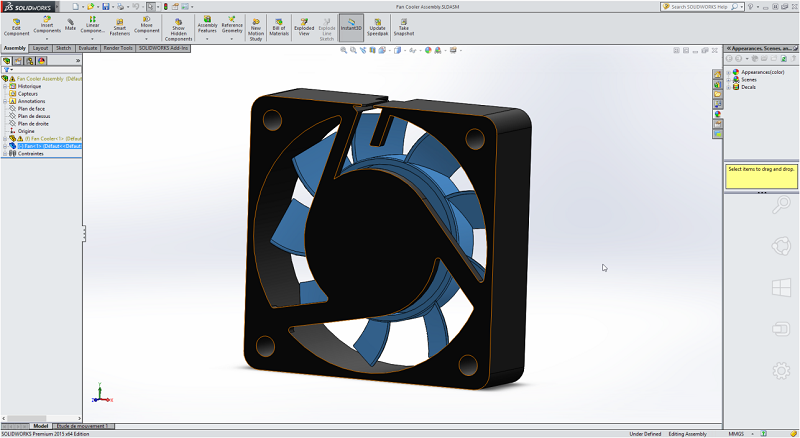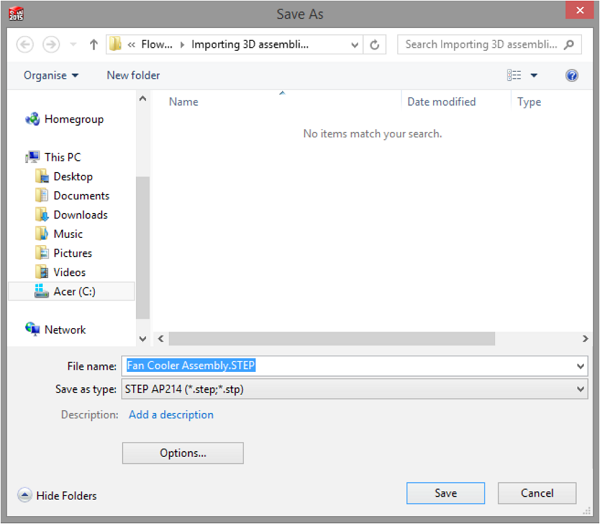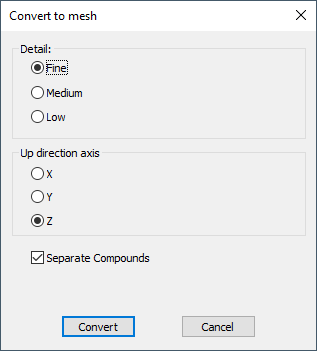Importing 3D Assemblies - E.g. SolidWorks
Flowcode is primarily a software package for the design of microcontroller systems that offers a flowchart based method of programming. For those new to programming, this is ideal as the visual implementation of flowcharts can be easier to understand. For those with programming experience, Flowcode offers the distinct advantage of speed, reducing the rapid prototyping stage of development. It is also used for the complete development cycle in many applications. With advances in technology and in particular the electronics industry, engineers of all disciplines are now expected to understand microcontrollers to some basic level. In Flowcode, engineers can create complex systems in minutes. Alongside this flowchart method of programming, Flowcode offers a powerful 3D simulator package. This allows users to verify their program before downloading code to hardware. The 3D environment is ideal for electromechanical systems where motors, servos, actuators can all be visually represented. Users can characterise and program 3D electromechanical systems with ease. Alongside these electromechanical components, users can import and characterise 3D systems, such as windmills, car steering racks, electric fans and many more. In fact, Flowcode allows users to simulate almost any electromechanical system. If we haven’t already got a 3D system that suits your needs, you can design your own in a dedicated 3D package and import it into Flowcode.
Flowcode supports the importing of 3D model assemblies in the industry standard formats of STEP, IGES and OBJ. This allows users to create their 3D models in dedicated drawing packages such as Solidworks, Autodesk Inventor or DesignSpark Mechanical and import them into Flowcode. One imported, users can ‘link’ objects to motors, servos and actuators to create their own 3D systems.
Creating your own 3D electromechanical system can be achieved in as little as 4 steps;
1. Create/ obtain the 3D model that you want to simulate in Flowcode 2. Import the model into Flowcode 3. Characterise your model a. Group any common objects b. Assign links to objects to allow movement 4. Create your flowchart
In this guide we will walk through the 4 steps required to import and characterise your own 3D model in Flowcode. We will assume you have created a simple fan, and want to simulate the rotation of the object with a DC motor.
Create/ obtain the 3D model that you want to simulate in Flowcode
First users must either create their own 3D system, or obtain a model from elsewhere. We will assume you are creating your own 3D model. There are a few things to remember;
Flowcode offers a 3D simulation environment, however, it is not a dedicated 3D drawing package. You will be simulating high-level electromechanical systems. When creating your own models for simulation, keep them as simple as possible, this will improve the simulation performance within Flowcode. For example, there’s no need to import a 3D model which includes multiple screws, all with a fine thread pitch and detailed screw head! Either simplify your model resolution, or remove unnecessary elements.Flowcode supports STEP, IGES, OBJ and STL file formats, however, STL files do not work as assemblies. Save your model in any of the appropriate file formats and remember the saved location.
Note: For STEP files, the STEP 214 file format works best with Flowcode.
With your 3D model saved, you can now import it into Flowcode. 3D models are imported by navigating to File->Import 3D Model… (note; you must have an opened flowchart for the import 3D model menu to appear).
The import model dialogue will appear as seen below, where users can import the following file types; 1. .MESH 2. .OBJ 3. .STEP 4. .IGES 5. .STL
If you import an .OBJ, .STL, .STEP or .IGES file, Flowcode will need to convert that file to its native file format. If you import a .MESH file, it will already be in the appropriate file format. When converting a file, you will be presented with the dialogue box below;
When importing models into Flowcode, it is advised again to do so at the lowest/ most coarse resolution. If this works fine, you may wish to increase the resolution to improve the visual look.
From the image below it can be seen that the fan assembly has imported as one assembly, containing 2 parts, which we have named ‘Case’ and ‘Fan’.


